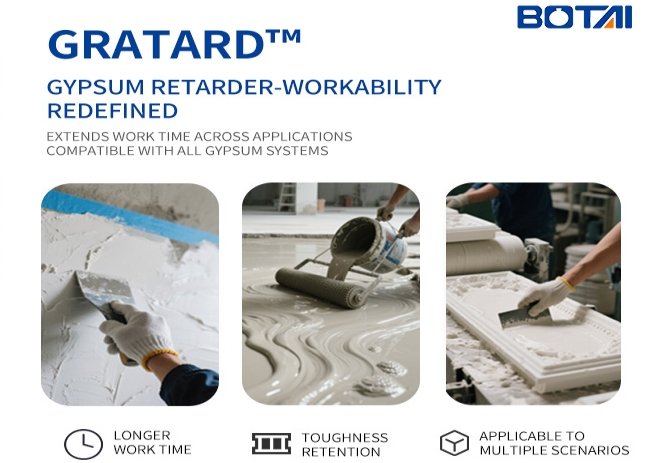In construction projects, the precise control of concrete setting time directly impacts both the quality of the project and construction efficiency. As a core admixture for regulating the setting speed of concrete, the rational use of retarders has become crucial. How can retarders be utilized to their maximum effectiveness in different construction scenarios? This article provides an in – depth analysis from a professional perspective.
I. The Action Mechanism of Retarders: Decoding the Principles of Time Regulation
Retarders affect the hydration process of cement through three main mechanisms: adsorption, complexation, and precipitation. Take hydroxycarboxylate – based retarders as an example. The carboxyl groups in their molecular structure react with calcium hydroxide, a product of cement hydration, to form insoluble complexes. These complexes cover the surface of cement particles, hindering the contact between water molecules and cement, thus retarding the hydration rate. Studies have shown that the rational use of retarders can extend the initial setting time of concrete by 2 – 8 hours, providing valuable time for complex construction operations.
II. Scenario – based Applications: The Precise Matching Rules of Retarders
1. High – temperature Construction: The “Coolant” Against Hydration Heat
In high – temperature summer environments, the hydration rate of cement accelerates, prone to issues such as rapid slump loss and cracking of concrete. At this time, selecting retarders like calcium lignosulfonate and molasses can effectively reduce the peak value of hydration heat, decreasing the internal temperature of concrete by 5 – 8°C. During the construction of a cross – river bridge at a temperature of 40°C, by adding molasses retarder at a dosage of 0.1% – 0.3%, the initial setting time of concrete was extended from 3 hours to 6 hours, successfully preventing early – stage cracks.
2. Mass Concrete Construction: The “Guardian” Against Cracks
During the pouring of mass concrete, the accumulation of internal hydration heat is likely to cause temperature – difference cracks. The combined use of retarders and high – range water reducers can delay the setting of concrete, allowing the hydration heat to be released evenly. In the construction of a nuclear power plant foundation, a combination of sulfamate – based retarders and polycarboxylate water reducers was adopted. The initial setting time of the concrete was controlled within 12 – 15 hours, and ultimately, the temperature difference between the inside and outside of the concrete was kept within 20°C, achieving the zero – crack standard.
3. Long – distance Transportation and Pumping: The “Stabilizer” Maintaining Workability
Ready – mixed concrete needs to maintain good fluidity during long – distance transportation and pumping. The coordinated action of retarders and slump – retaining agents can control the slump loss of concrete within 20mm within 2 hours. During the construction of Beijing Daxing International Airport, by adding a composite retarder and slump – retaining agent, the concrete still exhibited excellent pumping performance after 90 minutes of transportation.
III. Scientific Usage Principles: Three Key Control Points
Precise Dosage Control: The dosage of retarders must strictly adhere to the mix design. Excessive addition can cause the concrete to fail to set for an extended period or even lead to its scrapping. Generally, the dosage of lignosulfonate – based retarders is preferably controlled at 0.1% – 0.3%, and that of hydroxycarboxylate – based retarders at 0.03% – 0.1%.
Conduct Adaptability Tests First: Different types of cement and mineral admixtures have significantly different sensitivities to retarders. Before construction, adaptability tests between cement and retarders must be carried out. The mix ratio should be optimized by measuring indicators such as setting time and slump loss over time.
Dynamic Adjustment Based on Environmental Parameters: Environmental factors such as temperature and humidity directly affect the retarding effect. For every 10°C increase in ambient temperature, the dosage of retarders should be increased by 0.02% – 0.05%. When the humidity is low, the dosage should be appropriately reduced to avoid surface drying and shrinkage of the concrete.
As the complexity of construction projects continues to increase, the rational application of retarders has become an important part of the construction technology system. By deeply understanding their action mechanisms, precisely matching construction scenarios, and strictly controlling usage key points, construction teams can achieve “precise timing control” of concrete setting time, providing a solid guarantee for high – quality construction projects.



